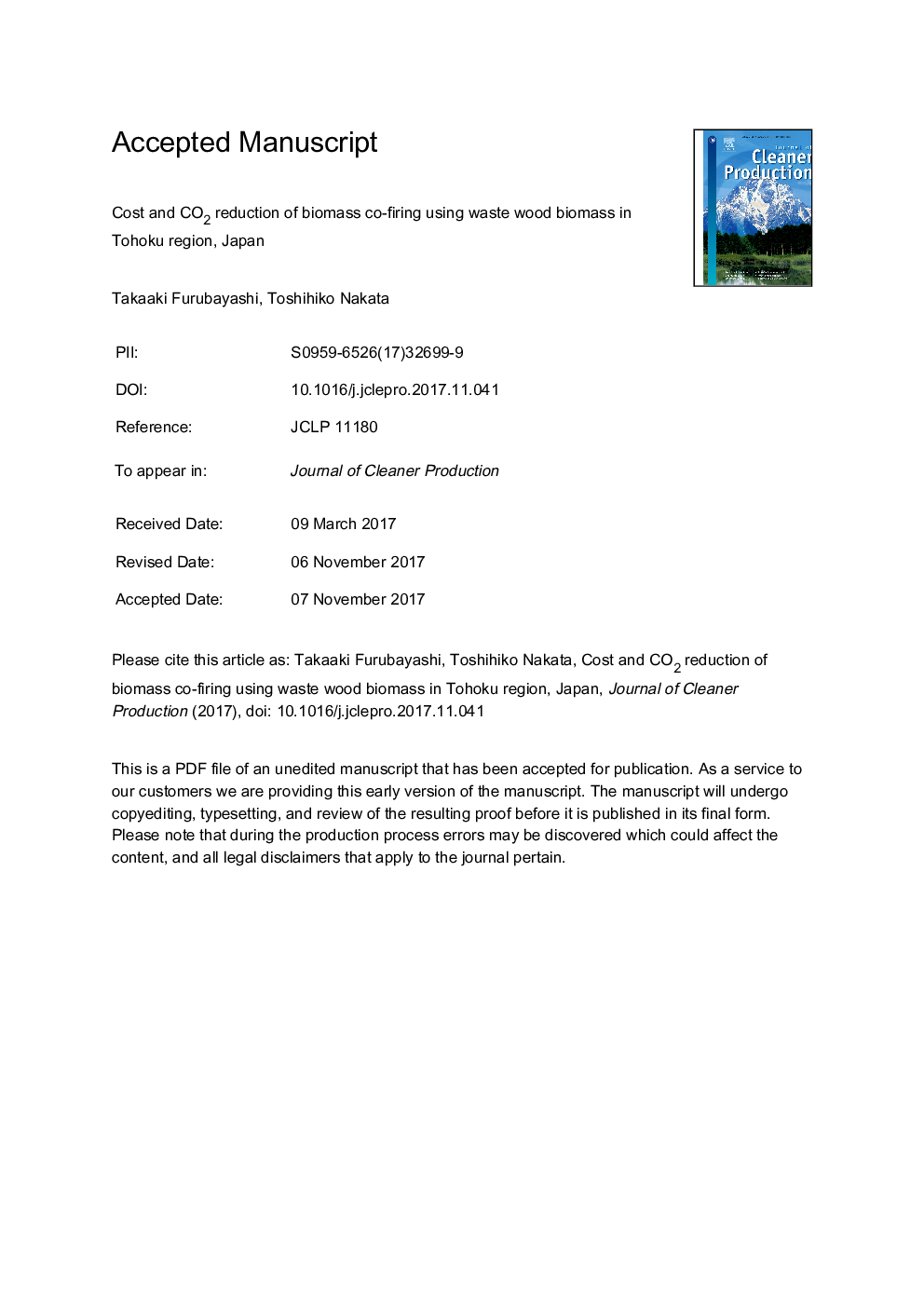| Article ID | Journal | Published Year | Pages | File Type |
|---|---|---|---|---|
| 8099710 | Journal of Cleaner Production | 2018 | 47 Pages |
Abstract
This paper aims to estimate the costs and CO2 emissions of wood biomass co-firing in the Tohoku region of Japan. A woody biomass supply system is designed, which comprises of four processes: collection, resource transportation, preprocessing, and fuel transportation. Preprocessing is further divided into two processes: drying and fuel production. Sawmill residue, construction waste, forest residue, thinning residue, and fruit-tree pruning residue are treated as raw materials. Wood chips, pellets, and torrefied pellets (known as black pellets) are regarded as bio-fuels. The raw-material and bio-fuel transportation pathways are optimized using a geographical information system (GIS). In the Tohoku area, the availability of raw-material is 3.6Â PJ/y, and the results indicate that the preprocessing plant locations should be widely distributed in that region, because the resource transportation costs have a significantly greater influence on the costs and emissions than the scale effect of the preprocessing facilities. The chip production case exhibits the smallest energy consumption of 3.8Â GJ/t, the lowest supply cost of 1558 JPY/GJ, and the largest CO2 reduction of 252Â ÃÂ 103Â t CO2/y, whereas the pellet production case exhibits a supply cost and CO2 reduction of 1643 JPY/GJ and 229Â ÃÂ 103Â t CO2/y, respectively. The energy consumption, energy waste, and cost of torrefaction are greater than the reductions in the transportation energy and cost due to wider distribution of the preprocessing plants; thus, the black pellet case has a larger supply cost than the chip and pellet cases.
Related Topics
Physical Sciences and Engineering
Energy
Renewable Energy, Sustainability and the Environment
Authors
Takaaki Furubayashi, Toshihiko Nakata,
